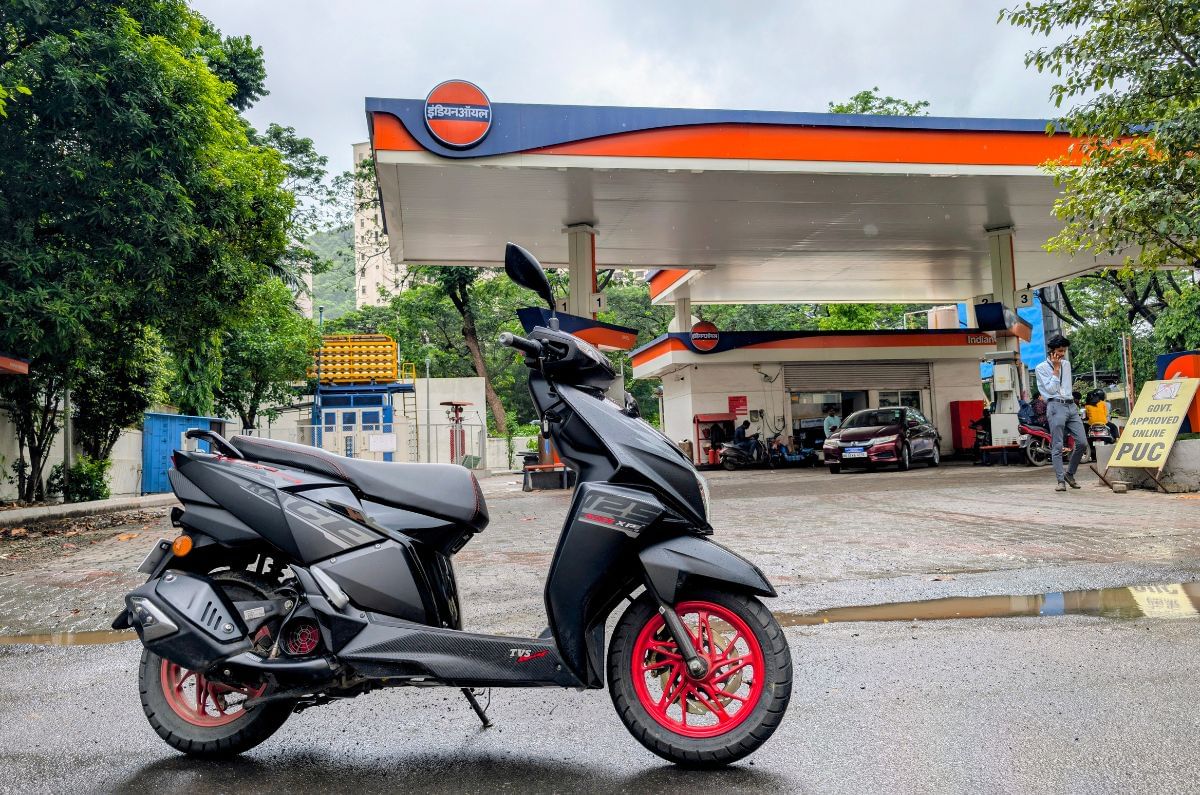
The TVS Ntorq has carved a strong reputation for itself in the 125cc segment, combining punchy performance with smart features. The Race XP variant takes things further with riding modes and a higher power output than standard versions. But how much do all those extras affect real-world efficiency? To find out, we put the Race XP through our standard fuel economy tests in both city and highway conditions.
TVS Ntorq Race XP real world fuel efficiency
The TVS Ntorq Race XP manages a combined fuel efficiency figure of 54.53kpl
Our test followed the same tank-to-tank methodology, and the Ntorq Race XP was ridden solo in Street Mode, with tyre pressures set to TVS’s recommended levels. Weather conditions were mixed, with some light rain encountered during both the test city and highway tests. For the city test, we covered 59.8km of typical urban riding, with heavy traffic, frequent signals and short bursts of open roads. After the run, the Ntorq required 1.14 litres of fuel to top up, resulting in a city fuel economy figure of 52.4kpl. For the highway test, the Ntorq was ridden for 61.2km at steady cruising speeds with minimal throttle variation. At the end of this stretch, it took in 1.08 litres, which gave us a highway fuel economy of 56.66kpl.
TVS Ntorq Race XP Fuel economy analysis
It is powered by a 124.8cc motor that produces 10.1hp and 10.9Nm.
In our real-world tests, the TVS Ntorq Race XP returned 52.4kpl in the city, which is a decent number for a scooter that prioritises performance. The highway figure of 56.66kpl is even more impressive, especially considering this is the most powerful version of the Ntorq.

Interestingly, the Race XP posted better mileage on the highway than in the city, which is more in line with expectations for a sporty scooter. With a 5.8-litre fuel tank, the Ntorq Race XP offers a theoretical range of over 300km, which is a useful number for those who commute daily or plan to go on short weekend rides.
Autocar India’s fuel-efficiency testing
Our fuel-efficiency testing routine starts by first brimming the tank and ensuring the bike is running the manufacturer’s recommended tyre pressures. The bike is then ridden on fixed city and highway routes, where we maintain average speeds that best mimic real world scenarios, as well as keeping speed limits in mind. The payload on the bikes is kept constant by balancing rider weights and ballast, ensuring consistency across different vehicles and riders. At the end of the test cycle, the fuel tank is once again filled to the brim, giving us an accurate figure of how much fuel has been consumed against the trip meter reading.
Also see: Yamaha FZS Fi Hybrid fuel economy tested, explained

